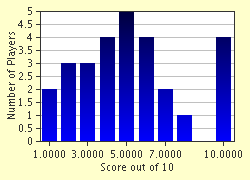Quiz Answer Key and Fun Facts
1. Archeologists have found evidence that people have been living in the area where Seoul now stands since at least the Paleolithic Age, several thousands of years ago. But the city proper did not begin to take root and spread out from the Han River until what alloy was discovered?
2. Seoul was officially founded in 18B.C. when the Baekje Kingdom began building one of its capitals in the area that is today called Seoul. What was the Baekje capital called at this time?
3. What is the English translation of Hanseong, the name Seoul took when it became the Korean capital in 1394?
4. Seoul saw its first glimmer of becoming a major world city when Korea ceased its isolationism in the 19th century. With which foreign world power did Seoul benefit from the most?
5. In the early 1900s, Japan annexed the Korean peninsula and made it part of the Japanese Empire. What did the Japanese name Seoul while the city was under their control?
6. How many times did the city of Seoul switch hands between North Korea and South Korea during the Korean War?
7. As Seoul began to revitalize after the Korean War, it annexed many of the smaller towns around it. However, even though this greatly increased the population and was beneficial in the long run, what short-term problem did this expansion cause?
8. In the 1980s, why was a green belt established around the city of Seoul?
9. Which event did Seoul cohost with Japan in 2002?
10. In 2004, which South Korean city did the government propose moving the capital to in order to slow the growth and crowdedness of Seoul?
Source: Author
Joepetz
This quiz was reviewed by FunTrivia editor
bloomsby before going online.
Any errors found in FunTrivia content are routinely corrected through our feedback system.

